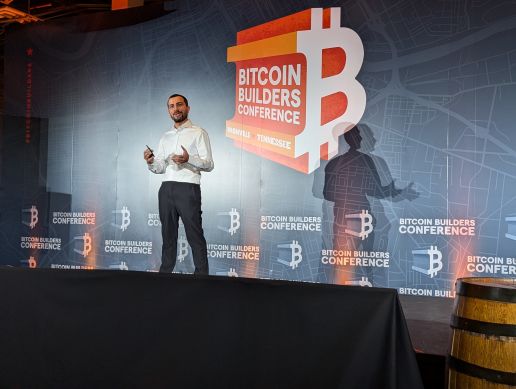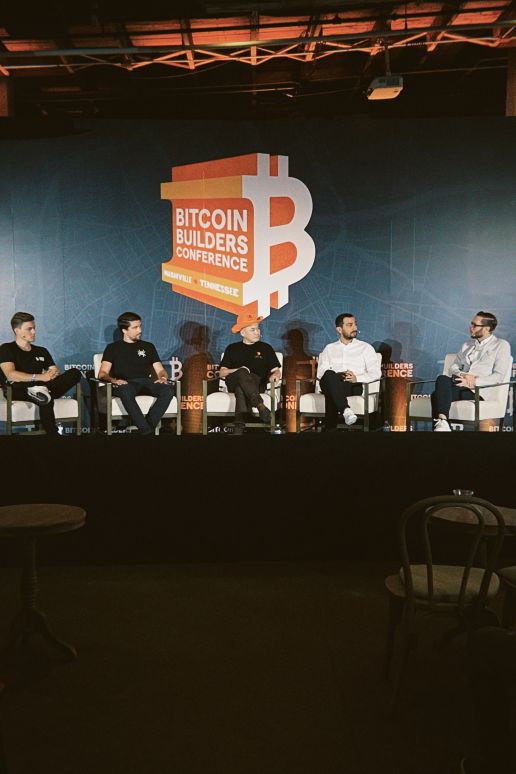Heading into The Bitcoin Conference 2024, Bitcoin had already celebrated several significant milestones. Fresh off the approval of a spot Bitcoin ETF, the cryptocurrency reached an all-time high just a month before its fourth halving event. On the same day as the most recent halving, Ordinals creator Casey Rodarmor launched the groundbreaking Runes protocol. The enthusiasm around Runes helped propel Bitcoin to its billionth transaction, a record for the world’s oldest blockchain.
Needless to say, there was much to celebrate in Nashville. However, this year also brought more questions than ever about Bitcoin’s future. Builders debated the prospects of on-chain data storage and Bitcoin ossification while the conference set the stage for Republican presidential nominee Donald Trump, who has become increasingly vocal about crypto.
In short, Bitcoiners now find themselves at a crucial crossroads. The momentum sparked by Ordinals in 2023 has carried over into 2024, but the question remains: where do we go from here?
Taking the Stage at Bitcoin Nashville 2024: Bitcoin L2s

Trust Machines has supported the development of Bitcoin L2s since the beginning. The increased presence of Bitcoin L2s during the Nashville conference week were incredibly encouraging and, we believe, point to a promising future for Bitcoin. Developers have been building decentralized applications (dApps) and use cases on Bitcoin for years, but the recent prominence of L2s marks the beginning of a more mature and established era for Bitcoin dApps.
Why Bitcoin L2s? Our Chief Operating Officer, Rena Shah, highlighted a pivotal point during her presentation at the Bitcoin Layer 2 Conference: the realization that "when you want to build a product that has high value settlement, you will come to Bitcoin."
Since Bitcoin's inception, it has been recognized for its unparalleled security and decentralization. What is evolving, however, is the growing acknowledgment that to achieve this level of security and decentralization for their projects, developers must prioritize efforts to scale Bitcoin. This makes Layer 2 solutions more critical than ever. By enhancing scalability, L2s are ensuring that Bitcoin can support a broader range of applications and handle increased transaction volumes while maintaining the blockchain’s core principles.
Leather and .locker, two Trust Machines products that were represented at the Bitcoin Builders conference and a number of events in Nashville, and just two examples of a whole ecosystem of dApps appearing on Bitcoin L2 networks. Our spokespeople – who represented both Trust Machines and Trust Machines products and protocols – covered everything from the work being done on sBTC to how wallets like Leather are aiming to simplify access points for new Bitcoin users with L2s.
After all, even Satoshi believed that Bitcoin needed L2s to scale. The advent of Ordinals in 2023 and, more recently, the Runes protocol only highlighted how much more work needs to be done to onboard more users to Bitcoin.
What’s Next For On-Chain Data?

It’s been over a year since Ordinals appeared on the scene and changed how blockchain users viewed the creation and preservation of on-chain data. Naturally, it was only fitting that some of the biggest names in Bitcoin made an appearance in Nashville to discuss and debate the future of on-chain data use cases and protocols.
Bitcoin wallets like Leather have made Ordinal NFTs, BRC-20 tokens, and more mainstays for users looking to collect digital art and do more with Bitcoin-backed assets. But as builders continue to scale Bitcoin, users and developers have already begun to explore what more they can do with on-chain data, both conceptually and technically.
For instance, Ordinals creator Casey Rodarmor made an appearance at Inscribing Nashville to speak on how the protocol could develop in the future, and what more could be needed for it to expand beyond its current capabilities. A panel on rare sats at the same event also covered the latest efforts from artists to preserve not only key moments from Bitcoin’s history, but also from their only lives, using inscription technology.
Bitcoin in 2025: Growing the Ecosystem and the Road Ahead
Bitcoin Nashville 2024 highlighted both the potential and the challenges that lie ahead for Bitcoin. From advanced scaling solutions to the integration of more sophisticated financial products, it’s clear that the Bitcoin community is still dedicated to the network’s evolution. These efforts are crucial not just for ensuring that Bitcoin can support a growing user base and dApp ecosystem.
With new technologies aimed at improving transaction throughput, enhancing security, and fostering more robust on-chain and off-chain solutions, the groundwork is being laid for a more resilient and scalable Bitcoin network. But the road ahead, as many have emphasized, is still long, with a number of developments needed for the world’s oldest blockchain to achieve its true potential.
Nevertheless, these foundational efforts will play a pivotal role in Bitcoin's continued growth and its ability to fulfill its promise as a decentralized financial system for the world.

